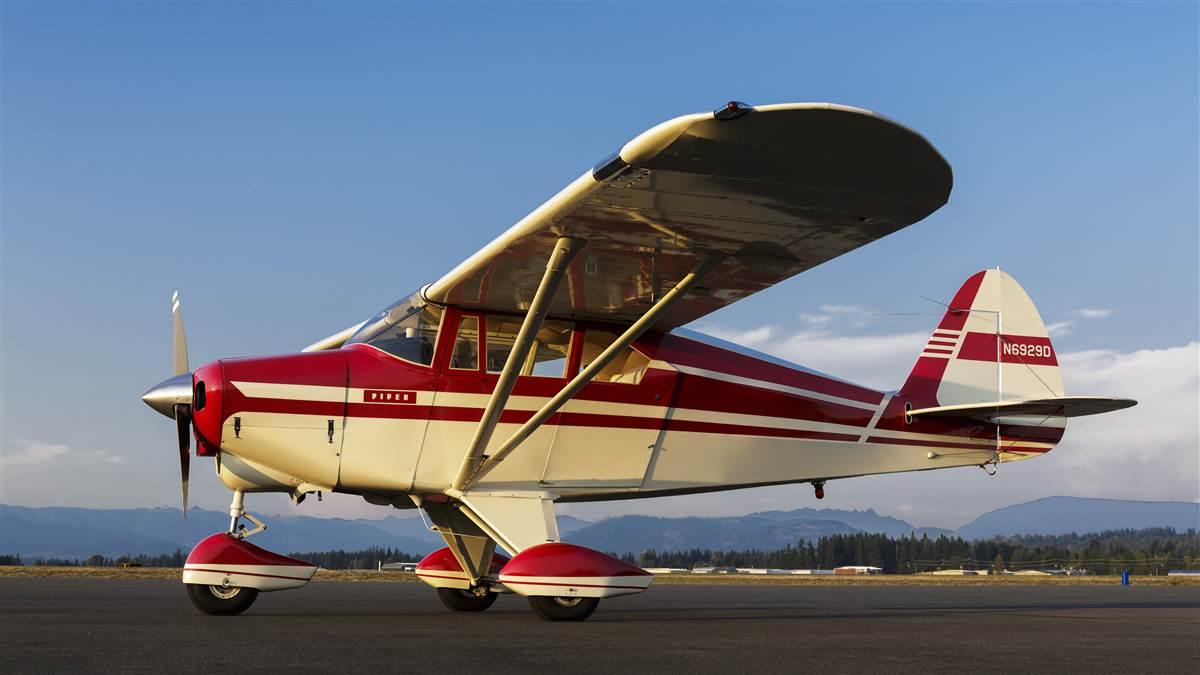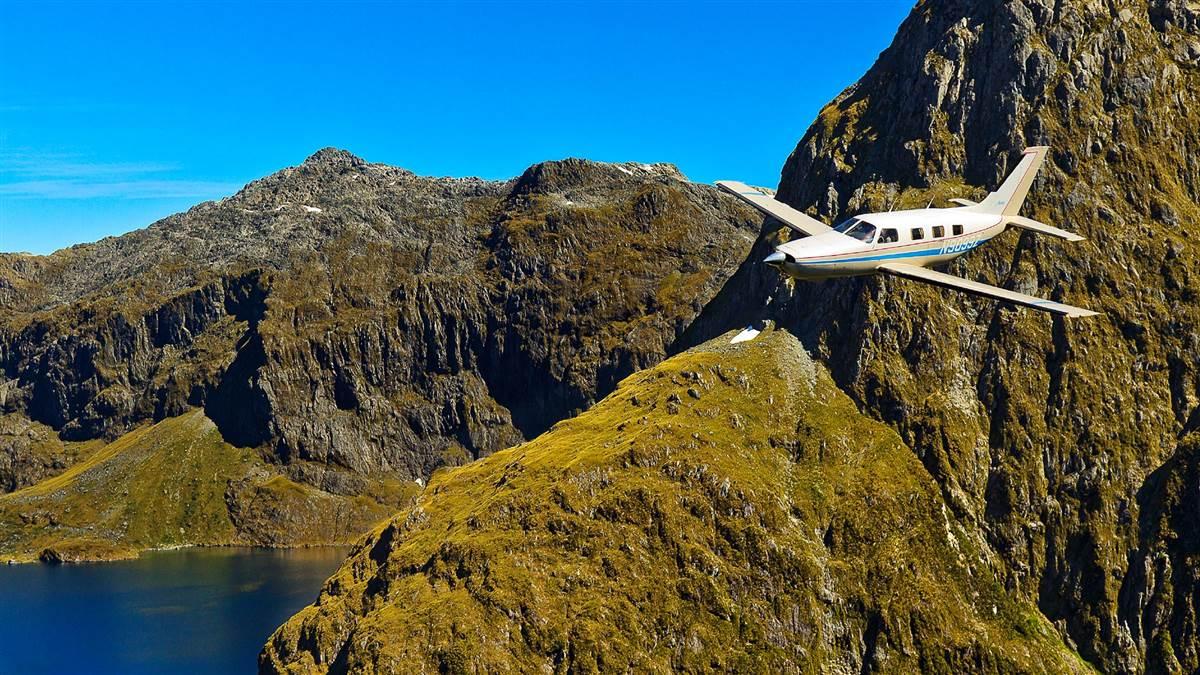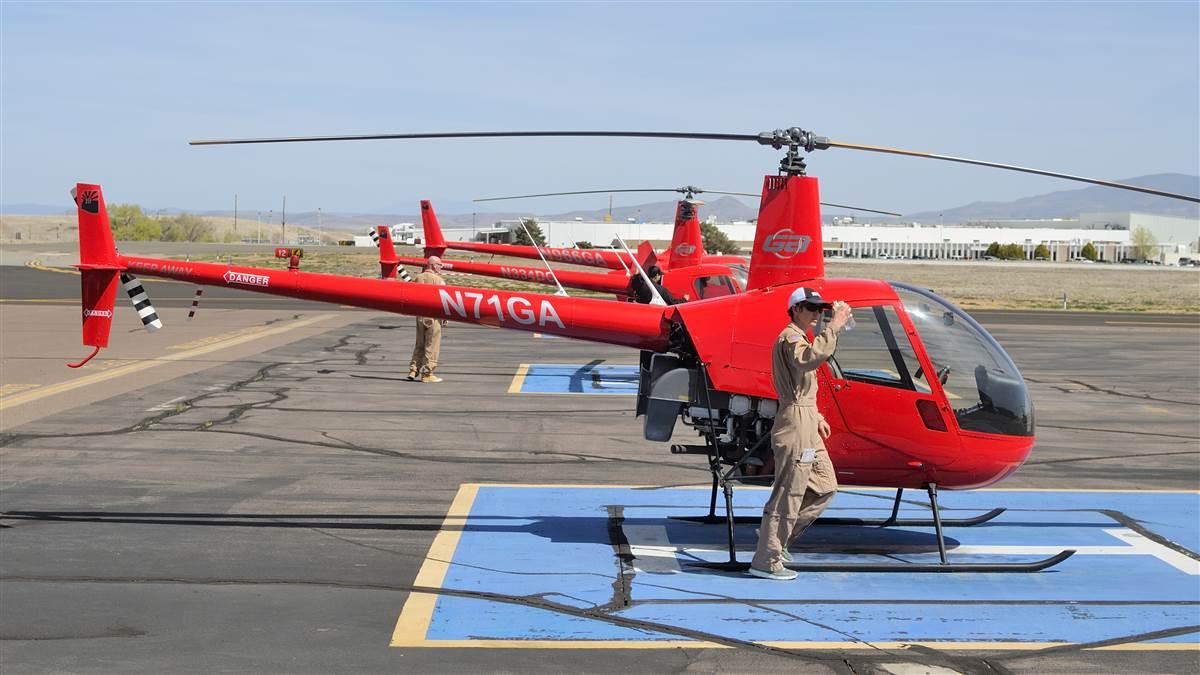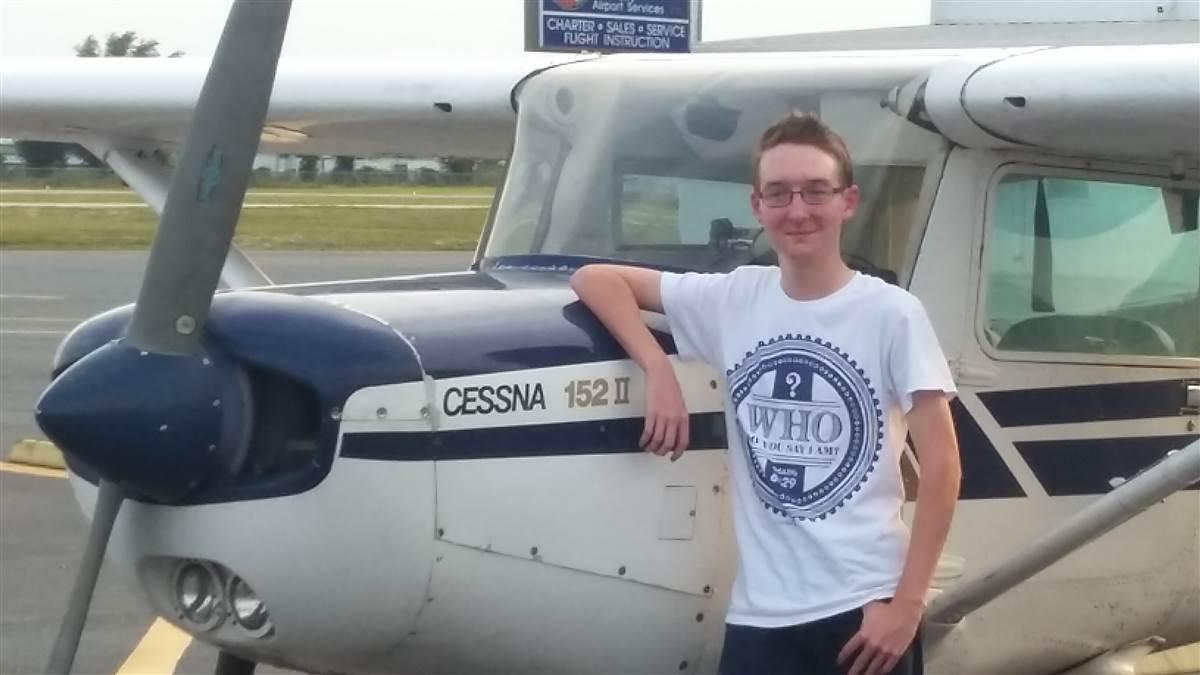Training News and Notes

What: 1957 Piper Tri-Pacer
Where: Arlington Municipal Airport (AWO), Arlington, Washington
Photographer: Mike Fizer
ASI NEWS
Don’t get caught between a rock and a hard place
Learn how to avoid in-flight obstacles
 On a nice VFR day, it can be tempting to get a quick weather briefing, hop in the cockpit, and fire up the GPS. Voilà, you’re on your way. But before you go, take a closer look at the sectional chart and identify obstacles that could ruin the day. That way, while scanning for traffic, you’ll be alert and on the lookout for fixed objects that may cross your flight path.
On a nice VFR day, it can be tempting to get a quick weather briefing, hop in the cockpit, and fire up the GPS. Voilà, you’re on your way. But before you go, take a closer look at the sectional chart and identify obstacles that could ruin the day. That way, while scanning for traffic, you’ll be alert and on the lookout for fixed objects that may cross your flight path.
Watch the recently released AOPA Air Safety Institute video (www.airsafetyinstitute.org/safetyvideos/CFIT), which describes situations that expose pilots to controlled flight into terrain and other obstacles. Look Out! Avoiding Terrain and Obstructions features interviews with pilots who have had close calls and want others to learn from their experiences. The video reviews practical ways to use paper and electronic charts for terrain and obstacle information, and it provides insight into the unique risks associated with flying at night in hilly terrain and mountains. In addition, it examines how adverse weather, airspace boundaries, and sluggish aircraft performance at high-density altitudes may push you closer to terra firma than you’d planned.
So before your next flight, scan the chart carefully. Look for and mark terrain elevations, tall towers, and the guide wires that support them—and pay careful attention to the location of turbine wind farms, which are often located on hilltops. Share this video so others can avoid getting caught in a tight spot from which escape may be difficult or impossible.
AOPA Fly-Ins
Prescott’s pleasures
AOPA Fly-In coincides with Embry-Riddle anniversary, homecoming
 There’s a lot going on at Ernest A. Love Field (PRC) in Prescott, Arizona. And a lot of that has to do with Embry-Riddle Aeronautical University, which since 1978 has operated its second-largest campus in the high-desert city about 100 miles north of Phoenix. That climate, which provides nearly 300 days of sunshine each year, is ideal for the internationally recognized university’s fixed- and rotary-wing flight training programs.
There’s a lot going on at Ernest A. Love Field (PRC) in Prescott, Arizona. And a lot of that has to do with Embry-Riddle Aeronautical University, which since 1978 has operated its second-largest campus in the high-desert city about 100 miles north of Phoenix. That climate, which provides nearly 300 days of sunshine each year, is ideal for the internationally recognized university’s fixed- and rotary-wing flight training programs.
Pilots can experience the region September 30 and October 1, when AOPA holds its fourth and final 2016 Fly-In at Prescott. The timing couldn’t be better. What became Embry-Riddle was launched on December 17, 1925, and the institution is celebrating its ninetieth anniversary all year. And its Prescott campus is holding its annual alumni homecoming celebration, OctoberWest, the weekend of the AOPA Fly-In.
At noon on October 1, the campus will present an aerial demonstration. Prescott alumna Melissa Andrzejewski (formerly Pemberton) will take to the skies with a wingsuit jumper and as part of multiship flight. Also performing are Bill Stein in his Zivko Edge 540 and Skip Stewart in his modified Pitts S-2S biplane.
Guidance Aviation operates a large helicopter flight school, and it will host most of AOPA’s fly-in activities. On Friday evening, the AOPA Fly-in Barnstormers Party, presented by Jeppesen, kicks off the event with barbecue, live music, and more. Saturday activities begin with a pancake breakfast, continue with a full day of educational seminars—there’s lunch, of course—and the program concludes with AOPA President Mark Baker’s Pilot Town Hall.
Success Stories
 It was the best birthday present a 16-year-old student pilot could ask for, and I could never have done it if it weren’t for my instructor, Bob Labrecque. Bob had become my instructor after my previous one had to stop flying because of some health issues, and even though I loved flying with Mark, I love how Bob has taught me from the first time we flew to fly using the checklists. I’ve been interested in aviation ever since I was in elementary school when I first flew with my uncle in his Cessna 182. When I heard that my cousin had soloed on his sixteenth birthday, I wanted to do the exact same thing. You never forget that rush you have when you climb into the left seat alone with no instructor to correct any errors you make, and I admit I was a little nervous while doing my preflight, but once I turned the ignition and started the engine of the Cessna 152 that feeling of being nervous was overcome by pure joy. I hope to one day become a commercial pilot and fly for the big airlines like Delta.
It was the best birthday present a 16-year-old student pilot could ask for, and I could never have done it if it weren’t for my instructor, Bob Labrecque. Bob had become my instructor after my previous one had to stop flying because of some health issues, and even though I loved flying with Mark, I love how Bob has taught me from the first time we flew to fly using the checklists. I’ve been interested in aviation ever since I was in elementary school when I first flew with my uncle in his Cessna 182. When I heard that my cousin had soloed on his sixteenth birthday, I wanted to do the exact same thing. You never forget that rush you have when you climb into the left seat alone with no instructor to correct any errors you make, and I admit I was a little nervous while doing my preflight, but once I turned the ignition and started the engine of the Cessna 152 that feeling of being nervous was overcome by pure joy. I hope to one day become a commercial pilot and fly for the big airlines like Delta.
Name: John Curtas
Age: 16
Event: Solo
Where: Plant City Municipal Airport, Plant City, Florida (PCM)
Airplane: Cessna 152
Products
‘The Savvy Flight Instructor’ now available from ASA
Brand-new flight instructors and seasoned flight school operators alike will find useful advice and plenty of industry insights in the second edition of The Savvy Flight Instructor, now available from Aviation Supplies and Academics. Author Greg Brown is a contributor to Flight Training magazine and writes the monthly “Flying Carpet” column. In addition to networking, pilot training, and customer support concepts, the new edition discusses selling pilot prospects via online marketing, social media, and other current concepts. The book is available in soft cover ($24.95) and digital ($19.95) versions.
See the website to order.


